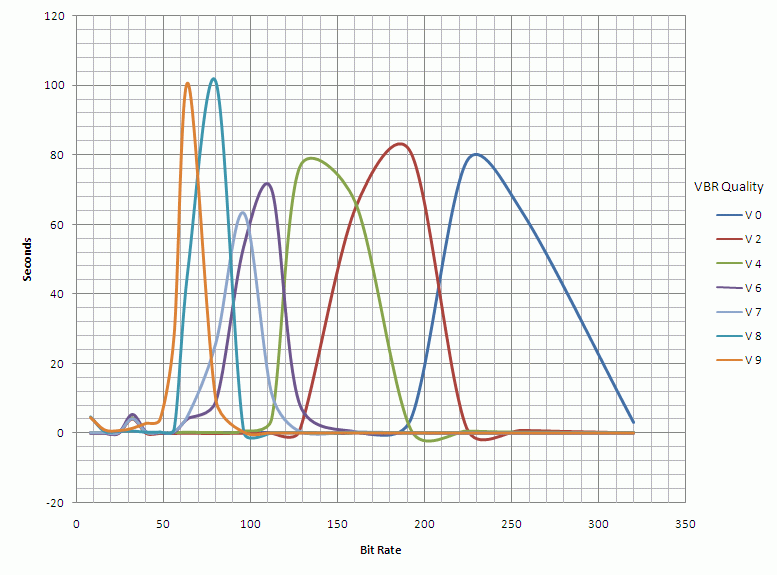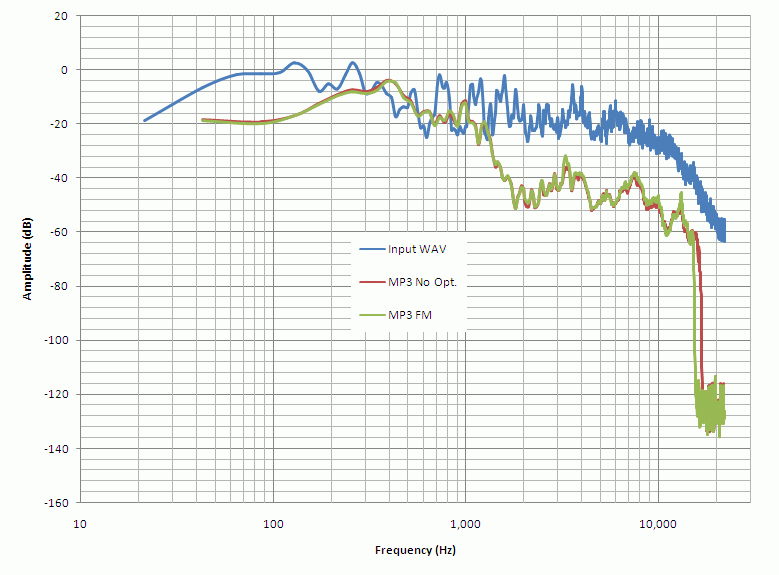cmd Output (Silent Switch Turned Off To Show Progress)

This article gives a little information on how to convert audio from CDs to MP3s that can be played on the many devices that play digital music. Computers, iPods, mobile phones, table top disk players, car stereos and similar devices play these files. You might want a version of your music that is compressed so more songs will fit on a given storage device.
Many computer media players will convert from CD to popular compressed formats. Windows Media Player, iTunes and Realplayer will do this easily in one step. They don’t have as many options as a special purpose encoder like L.A.M.E. does. Window’s player favors Windows formats like WAV and WMA, iTunes favors AAC (Advanced Audio Codec), and Realplayer favors the Realaudio format and they offer more encoding options in those formats. If you are satisfied with the results of one of these programs then go ahead and use it. Otherwise you may want to take the extra step to save the songs from your CDs in an uncompressed format and then use an encoder like L.A.M.E (the recursive L.A.M.E Ain’t an MP3 Encoder is funny to geeks, nerds, and nerdy geeks).
The three previously mentioned players will extract CD audio (save songs to an uncompressed format like WAV, WMA, AIFF or OGG [L.A.M.E. favors WAV]). CDex and EAC (Exact Audio Copy) will do this also. This step is trivial in that there is no decoding or encoding involved. The audio data remains exactly the same but the file header or table of contents may change. Surprisingly, only Windows Media Player had trouble with this. It began and ended some of the songs in the wrong place. In Linux, this step is even more trivial. In Ubuntu Debian, the songs are simply copied from the CD and appear on the storage device as WAV files.
While the popular and easy programs only give you a handful of encoding options, L.A.M.E. allows you to control nearly every aspect of encoding. Besides creating a mono or stereo recording, you can choose from many degrees of quality and file compression.
The encoder breaks the audio up into sections (frames) for analysis. There are about 40 frames per second of music.
Simple stereo is not recommended; use joint stereo. This technique detects the amount of separation in the particular frame of music and will encode sound that doesn’t have any significant separation as a single middle track, using half as many bits in that frame as simple stereo. The methods used to determine which sections require more bits are called the psychoacoustic algorithms and L.A.M.E. gives you a choice of ten combinations.
If no options are specified, the song will be encoded at a constant bitrate. This is not recommended. The encoder is capable of using a variable bitrate (VBR) that will apply more bits in the louder, more complex frames of the music where they are needed and encode silent sections at the lowest possible bitrate. MPEG-1 Layer III (MP3) is capable of 14 bitrates from 32 kbps to 320 kbps and L.A.M.E. lets you choose any of these constant bitrates or ten levels of quality of VBR. Or instead of specifying a level of VBR quality and settling for the resulting average bitrate you can specify a desired average bitrate and the encoder will come close to that rate. The following chart compares the bitrate distributions for many of the available VBR qualities:

So, when specifying a biterate you can choose from 14 constant, ten qualities of variable, or any average variable biterate.
You can also use a filter. It is wise to use a lowpass filter so bits aren’t wasted on frequencies that only your dog can hear and your stereo probably doesn’t play.

You can either type in all the command line options or use one of the many aliases provided. The table below compares the various aliases and lists their equivalent commands on the right:
| Alias | Size | Comp. | Mode | Bit rate | Nom/Min | Channels | Samp. rate | Encoding settings |
| None | 2.31 | 9.1% | Constant | 128 Kbps | 2 channels | 44.1 KHz | -m j -V 4 -q 3 --lowpass 17 -b 128 | |
| insane | 5.79 | 22.7% | Constant | 320 Kbps | 2 channels | 44.1 KHz | -m j -V 4 -q 3 --lowpass 20.5 | |
| studio | 4.36 | 17.1% | Variable | 241 Kbps | 2 channels | 44.1 KHz | -m j -V 4 -q 3 --lowpass 19.7 --abr | |
| extreme | 4.25 | 16.7% | Variable | 235 Kbps | 32.0 Kbps | 2 channels | 44.1 KHz | -m j -V 0 -q 0 --lowpass 22.1 --vbr-new -b 32 |
| cd | 3.22 | 12.6% | Variable | 178 Kbps | 192 Kbps | 2 channels | 44.1 KHz | -m j -V 4 -q 3 --lowpass 18.6 --abr 192 |
| standard | 3.15 | 12.4% | Variable | 174 Kbps | 32.0 Kbps | 2 channels | 44.1 KHz | -m j -V 2 -q 0 --lowpass 18.5 --vbr-new -b 32 |
| hifi | 2.68 | 10.5% | Variable | 148 Kbps | 160 Kbps | 2 channels | 44.1 KHz | -m j -V 4 -q 3 --lowpass 17.5 --abr 160 |
| medium | 2.52 | 9.9% | Variable | 139 Kbps | 32.0 Kbps | 2 channels | 44.1 KHz | -m j -V 4 -q 0 --lowpass 17.5 --vbr-new -b 32 |
| fm | 1.9 | 7.5% | Variable | 105 Kbps | 112 Kbps | 2 channels | 44.1 KHz | -m j -V 4 -q 3 --lowpass 15.6 --abr 112 |
| voice | 0.985 | 3.9% | Variable | 53.1 Kbps | 56.0 Kbps | 1 channel | 32.0 KHz | -m m -V 4 -q 3 --lowpass 15 --abr 56 |
| mw-us | 0.694 | 2.7% | Variable | 37.5 Kbps | 40.0 Kbps | 1 channel | 24.0 KHz | -m m -V 4 -q 3 --lowpass 10.5 --abr 40 |
| mw-eu | 0.412 | 1.6% | Variable | 22.2 Kbps | 24.0 Kbps | 1 channel | 16.0 KHz | -m m -V 4 -q 3 --lowpass 5.9 --abr 24 |
| phone | 0.276 | 1.1% | Variable | 14.9 Kbps | 16.0 Kbps | 1 channel | 16.0 KHz | -m m -V 4 -q 3 --lowpass 5.6 --abr 16 |
How do you know which of these seemingly infinite number of options to use? I recommend doing some listening. I was surprised to learn that I couldn’t hear much difference between songs encoded with the “fm” alias (a little more than 100 kbps) and those with the highest bitrates in my devices. I was able to fit more songs on my devices than I originally assumed.
One problem I have is that some songs tend to be louder than others. The newer recordings are usually louder than the older ones. L.A.M.E. analyzes the volume and determines how much each song should be turned up so they all play at about the same level then records this setting in the tag for players that use “Replaygain.” I don’t like to use this. I use a program called “mp3gain” that actually increases the volume of the MP3 without more encoding or reduction in the quality of sound.
